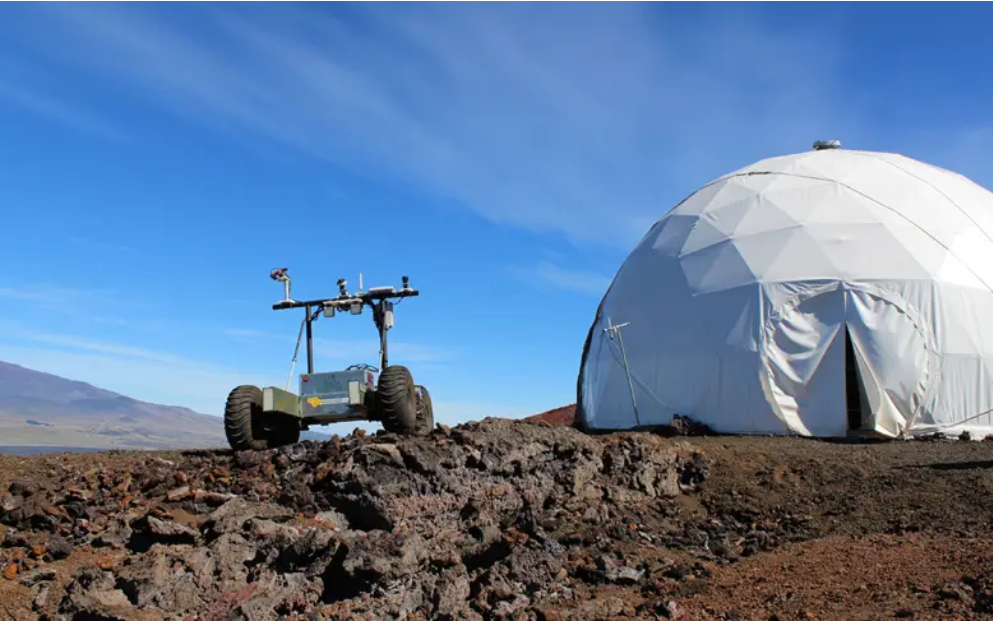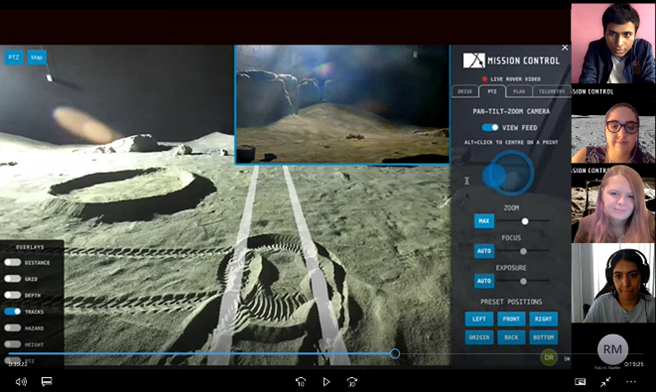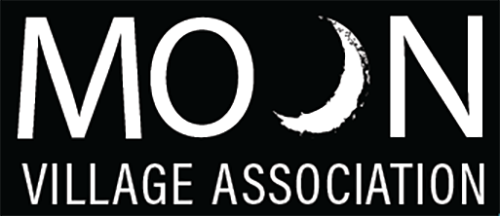Deprecated: strpos(): Passing null to parameter #1 ($haystack) of type string is deprecated in /var/www/dev.brb.rs/moonvillageassociation.org/wp-content/themes/blocksy/inc/components/blocks/blocks-fallback.php on line 16
Deprecated: strpos(): Passing null to parameter #1 ($haystack) of type string is deprecated in /var/www/dev.brb.rs/moonvillageassociation.org/wp-content/themes/blocksy/inc/components/blocks/blocks-fallback.php on line 16

Exploration Analogues
The “Moon Village & Exploration Analogues” Project provides a forum for identifying and coordinating activities related to terrestrial analogues for the Moon Village. It also addresses the associated topic of the use of the Moon as an analogue/testbed for future exploration of Mars and other destinations; it works with all of the various MV working groups discussed.
Leader(s)
Koorosh Araghi, Robert Mueller
International Moon Day Telerobotics 2022


The United Nations approved the creation of the International Moon Day (IMD) as an annual educational, cultural and scientific event. The International Moon Day is to be observed annually on 20 July to raise awareness among the public and generate support for sustainable Moon Exploration and Utilization. The International Moon Day encourages and promotes events around the globe on 20 July, including community panel discussion, lectures, webinar, concerts exhibits and screening of educational videos.
The Moon Village Analogue (MVA) Working Group provides a forum for identifying and coordinating activities related to terrestrial analogues for the Moon Village. It also addresses the associated topic of the use of the Moon as an analogue/testbed for future exploration of Mars and other destinations. The Working Group will support the creation of Analogues around the world as a tool to contribute to capacity building in space developing countries and in general as outreach to the public.
In order to support the International Moon Day (IMD) and demonstrate the leadership of the MVA, the Moon Village Analogue (MVA) Working Group organizes an annual tele-robotics event for the International Moon Day using planetary rover prototypes. The rovers will be available for tele-operations from multiple sites across the globe in order to promote international collaboration and cooperation. Our goal is to have analogue test sites across the globe collaborating and the tele-operations event will provide a tangible mechanism for promoting such collaboration.
These planetary rover terrestrial prototypes are provided by organizations that are leaders in the new field of tele-robotics and by creating the tele-robotics demonstrations, they inspire many students across the world while also gaining valuable information on human machine interaction.
IMD 2022 Telerobotics Report
Global Catalog of Analogue Proving Grounds and Test Sites


Operating on the surface of other extra-terrestrial bodies (Moon, Mars, Venus, asteroids, Icy Moons etc.) will require advanced technologies for both humans and robots who will interact with each other in space. These technologies do not currently exist, but are under development and must be tested to ensure a high level of performance and reliability.
While testing in-situ on these extra-terrestrial bodies via the use of pre-cursor space missions is ideal, it is also cost prohibitive, risky and slow. One way of mitigating these issues is to test at a terrestrial analogue site that has conditions that approximate the space destination in terms of terrain and extreme environments. While vacuum, reduced gravity and other unique high fidelity environmental conditions are not available on Earth, the operations and systems integration aspects of testing in these extreme environments are highly beneficial to the end goals of human and robotic space exploration and scientific endeavors.
A space surface analogue test site is a location on Earth that is used to simulate the conditions of extra-terrestrial surfaces in order to test and develop technologies, equipment, and procedures for use in space exploration. These sites are designed to mimic various aspects of the space environment, in order to study the effects of these conditions on humans, equipment, and materials. An analogue test site is not inside a laboratory facility.
Examples of space analogue test sites include the Mars Desert Research Station in Utah, the Haughton Mars Project on Devon Island in Canada, which simulate the conditions on Mars, and the Aquarius Reef Base off the coast of Florida, which simulates the isolation and confinement of a deep space mission. Such sites are used by researchers, engineers, and astronauts to test equipment and procedures, as well as to conduct scientific studies and prepare for future space missions.
In addition, these technologies and operations must be demonstrated and proven through their intended life cycle . Ideally the demonstrations will take place in a disciplined way in an appropriate and secure environment called a “Proving Ground”. A Proving Ground is a facility or location that is designed for testing and evaluating new technologies, equipment, and systems under realistic conditions. It is typically used for military, aerospace, and automotive testing, as well as other industries that require rigorous testing and evaluation.
Proving grounds are used to simulate real-world conditions that cannot be easily replicated in a laboratory environment. They allow engineers and scientists to test and evaluate new technologies and equipment under controlled conditions, with the goal of improving performance, reliability, and safety. Typically proving grounds have more infrastructure and permanent facilities that analogue test sites.
Analogue Proving Grounds and Test Sites are available across the globe, and are growing each year as the space industry evolves. However, it is difficult to find information about these capabilities and the relevant points of contact.
In order to facilitate the interaction between providers and customers, the Moon Village Association (MVA) analogues Working Group is conducting a survey of all existing Analogue Proving Grounds and Test Sites across our planet with the goal of publishing a catalog of Analogue Proving Grounds and Test Sites. The survey depends on an army of international MVA volunteers who are collecting relevant information and formatting it into templates that will be published on the MVA web site for public access, as a service for improved Exploration Analogues accessibility.
